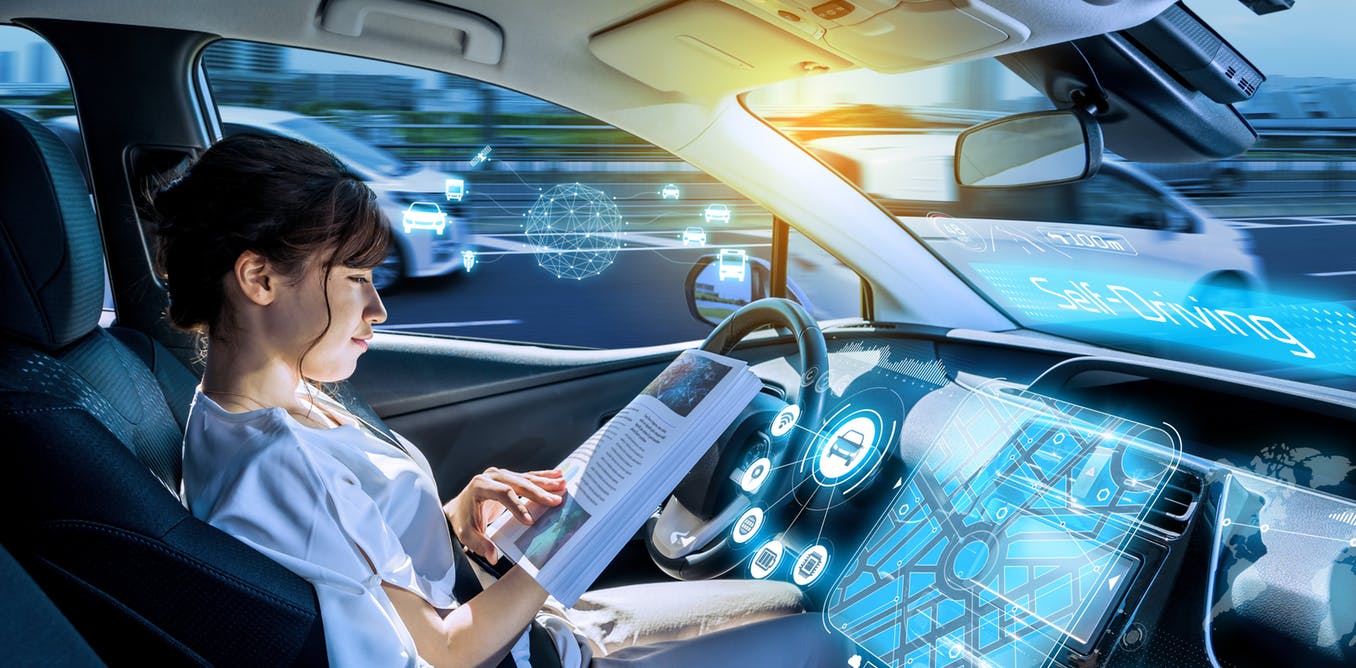In the robotic car you can get pumped up - but there is a solution for this problem.

Robomobili will take us to the transport utopia - if you believe their supporters. In the conceptual drawings depicting these futuristic vehicles, you can see passengers facing each other , reading, working or enjoying other activities , while their car drives them. I would say that one of the main advantages of the mobile can be considered the ability to do something else, while you safely and comfortably move to your goal.
But it follows from my doctoral dissertation that we cannot feel so comfortable or work as productively as shown in these figures without finding a way to combat motion sickness. Just as passengers in ordinary cars can be swayed if they do not look out the window, after transferring control of the car to the mobile when trying to concentrate on something else, the passenger will likely experience nausea.
In a recent experiment, my colleagues and I found that 100% of passengers, who were sitting backwards in a rover mobile, had symptoms of motion sickness during an ordinary city trip. This is consistent with the results of the previous study , according to which, the lack of the ability to look in the direction of the car can lead to increased symptoms of motion sickness.
')
In another experiment , in line with our research, we found that the ability of a person to read was reduced by 40% simply due to moving around the city at a normal speed. However, we found that technological solutions may be appropriate to combat this problem.
Motion sickness occurs due to the conflict between signals from different senses. When our eyes look around, our inner ears can feel movement. When the two signals do not match, the likelihood of seasickness rises.
For example, when you read a book in a car, your eyes see something still and your ears tell your brain that you are moving. The opposite effect occurs in virtual reality , when your eyes get a lot of various information that tells you about the movement, and the inner ears do not recognize the movement, which leads to the appearance of similar symptoms of motion sickness.

All people except for completely deaf people or people with a very poorly functioning vestibular apparatus are prone to motion sickness. The degree of symptoms may depend on age, ethnic group, gender, and past experience. For example, the Chinese are usually more sensitive to motion sickness than white Europeans, women are more sensitive than men, and 11-year-old children have the most sensitivity .
Drivers do not suffer from seasickness, because they know the likely movement of the car in the near future, as well as the steering on boats. As a result, they perform such actions as tilting the head as opposed to turning the car, which impedes the driving forces (passengers, on the contrary, bow their heads in the direction of the turn).
The main method of solving the problem of motion sickness is to look not at a fixed object in the direction of movement, so that your eyes send the same signals to your brain about your movement as your internal ears. Therefore, it will be quite difficult to integrate seats rotated back into robo-mobiles, from which it is impossible to see the direction of movement.
In order to minimize motion sickness, other information can be used to inform about the movement of the mobile. These can be voice prompts of a satellite navigation system, lights indicating the direction of the turn, virtual horizons showing the location of the real horizon.
Resistance to motion sickness
Perhaps we can develop robomobili so that initially reduce the chances of the occurrence of motion sickness. My colleagues and I demonstrated a technology that can reliably predict the onset of symptoms of motion sickness in a passenger based on his vital signs, posture and data on the past and the proposed future movement of the mobile. Based on this data, we can create a personalized recovery program that depends on the person and their specific actions. After that, we can tailor the machine control settings to minimize unwanted traffic and maximize passenger comfort.
We also conducted research on how a small vibrating device behind the ear can extend the period of time until even the most sensitive people begin to feel the symptoms of seasickness in the mobile phone. Such a device, at least on small trips, could help you avoid the symptoms of motion sickness without having to look out the window and without side effects from medications.
Future research will focus on how to train people to gradually get used to the trips and do different things in the car, to a lesser extent suffering from seasickness. We also want to collect biometric data of passengers remotely and implicitly, as well as use AI to evaluate this information, to understand how well they cope with the workouts, and to adjust them accordingly. We hope that having taught passengers to go about their business while driving, we will get rid of the unpleasant sensations of the presence of obstacles on the way to the revolution of romo-mobiles.
Source: https://habr.com/ru/post/431278/
All Articles